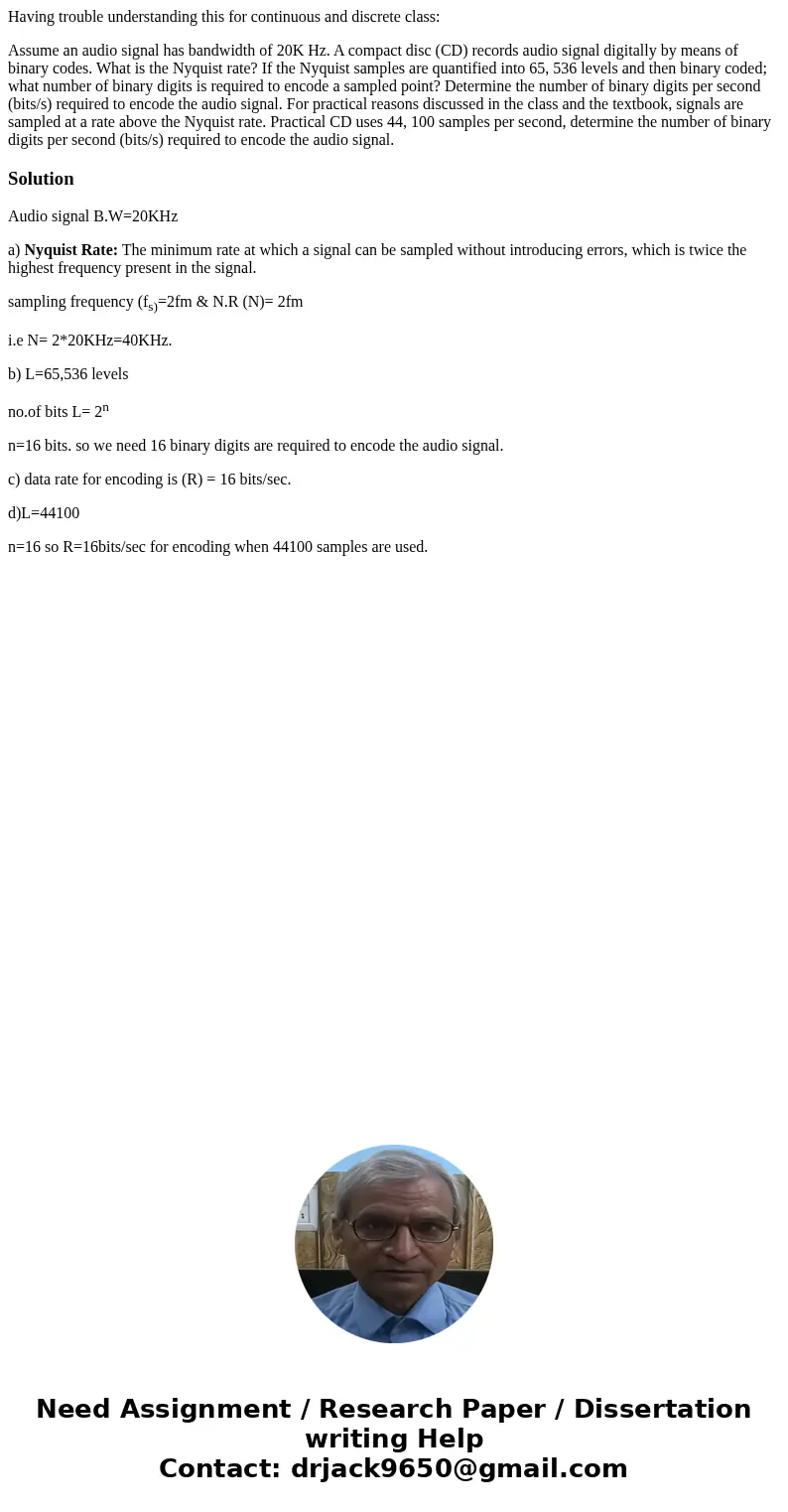Having trouble understanding this for continuous and discret
Having trouble understanding this for continuous and discrete class:
Assume an audio signal has bandwidth of 20K Hz. A compact disc (CD) records audio signal digitally by means of binary codes. What is the Nyquist rate? If the Nyquist samples are quantified into 65, 536 levels and then binary coded; what number of binary digits is required to encode a sampled point? Determine the number of binary digits per second (bits/s) required to encode the audio signal. For practical reasons discussed in the class and the textbook, signals are sampled at a rate above the Nyquist rate. Practical CD uses 44, 100 samples per second, determine the number of binary digits per second (bits/s) required to encode the audio signal.Solution
Audio signal B.W=20KHz
a) Nyquist Rate: The minimum rate at which a signal can be sampled without introducing errors, which is twice the highest frequency present in the signal.
sampling frequency (fs)=2fm & N.R (N)= 2fm
i.e N= 2*20KHz=40KHz.
b) L=65,536 levels
no.of bits L= 2n
n=16 bits. so we need 16 binary digits are required to encode the audio signal.
c) data rate for encoding is (R) = 16 bits/sec.
d)L=44100
n=16 so R=16bits/sec for encoding when 44100 samples are used.

 Homework Sourse
Homework Sourse